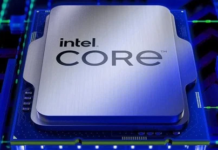Where competitors like Qualcomm still offer high-end processors engraved in 20 nanometers, Samsung last week officially unveiled its latest 14-nanometer Exynos 7 Octa chip, which is likely to be found in the heart of the Galaxy S6. And the Korean should not stop in such a good way since the latter unveiled, a few days ago, its last process of engraving in 10 nanometers via FinFET.
Samsung unveils its new 10 nm engraving process.
While the first Exynos 7 Octa processor engraved in 14 nanometers is not yet commercially available, Samsung is already talking about its future chips engraved in 10 nanometers. Knowing that 14 nm engraving promises 20% more performance and an energy saving of between 30 and 35%, the next generation engraved in 10 nm should bring even more power as well as better autonomy.
- Related: Samsung announces Exynos 7 Octa engraved in 14 nm
As Kinam Kim, president of Samsung Electronics Semiconductor, said, FinFET engraving in 10 nanometers will represent a major advance in the Internet of Things. This new manufacturing process will allow us to design ever smaller and even more energy-efficient processors. Perfect for smartwatches and other connected objects whose size limits battery capacity.
Although this has not been explicitly mentioned by Kim Ki-nam, it is safe to assume that Samsung will not miss the opportunity to use finFET engraving in 10 nanometers for the mobile chips of its smartphones. A progress that we probably won’t see on the market until 2016 or 2017 but that will happen sooner or later.
It is noticeable that the engraving in 10 nanometers does not concern only the future processors of the firm since it will also be used on the memory DRAM and NAND flash. It should also be noted that Samsung will also supply the DDR4 RAM of the LG G4 and the next iPhone.
via
































